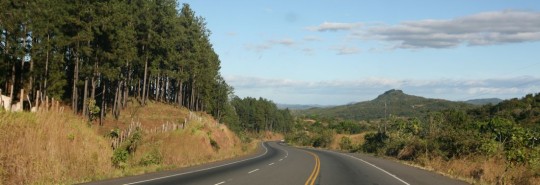
We arrived at the border with Panama at around 11:30 in the morning. As usual, kids who want to help jumped on us as soon as we showed up. Tired of it, we let one of them guide us through the complex circuit. As in every border crossing, we cancel the temporary import of the car, get our passports stamped out of Costa Rica, get the visa for Panama (US$2), get car insurance for a month in Panama (US$15) and make the temporary import for the truck (Free).

This time we specify our exit point as being the harbor of Colon, on the Caribbean side. From there we should ship to Cartagena, Colombia.
Two hours later we are done. I buy some duty free merchandise, and we go with the car through fumigation to avoid importing illegal parasites.

Once we pass the border, we are at 500 kilometers from the capital and we don’t have enough time to make it before night. It is now Wednesday, and I want to use Thursday and Friday to find a shipping solution for the car.
200 kilometers from Panama City, we leave the Pan-American Highway to take a dirt road so we can find a camping spot. At the end of the path, 20 minutes later, we find a small village with no electricity and ask a family to camp around.
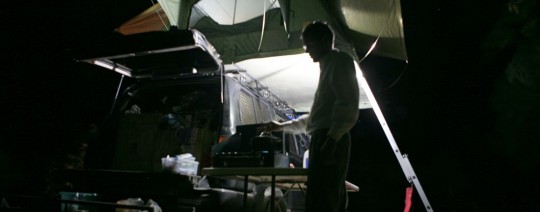
Nadia is tired as we took a lot of heat during the border crossing. She goes to bed, and I make diner and read. I am now able to spend a little bit of time with my books since we made it to Costa Rica. Before that, days were so busy I could not keep up with all the reading material I bring along. Recent readings include Jim Harrison “True North” (recommended), Richard Yates collection of short stories “Eleven kinds of loneliness” (recommended), Joseph Heller “Catch 22” (I did not like).
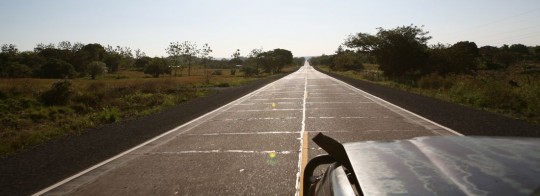
In the morning we wake up very early, thanks to our friends the roosters. Soon, we are back on the road, we find back the Pan-Am and continue our drive east.
Around 1 p.m., we pass the bridge above the Panama Canal. It’s exciting, as I am now getting ready to close the Central America chapter of the expedition.
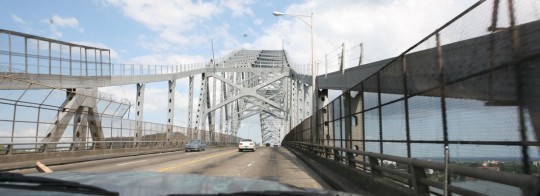
A bit later, we go and visit the first agent who gives us few quotes. I have been shopping around as well in the past, and got some help from a Panamian friend (Thanks Alberto!).
Also, we have been speaking with other travelers who are looking for a ride with their trucks, and we are hoping to get a group price. Basically, it looks like shipping will cost between US$900 to $1,350. That does not account for harbor fees on the Colombian side (an estimated $250).

As a reminder, it is impossible to drive from Panama to Colombia, since the Pan-American Highway is interrupted, and there are no roads to cross through the jungle for about 90-miles.
On Friday, I continue my research and speak with other agents. One of the options, which was to ship on a banana boat from Chiquita doesn’t work out. But our luck is that with the economic downturn, it is easier to find container boats with space available.

Since we arrived in the city, we camp at the entrance of the Canal, close to the Balboa Yacht Club. Here, we have access to water and internet, which is necessary for all the research I have to do. It is rare that these container boats take passengers, so we also have to book flight tickets (around US$200).

Also, I considered flying from Panama City to Puerto Obaldia, close to the border on the Panama coast. From there, it is possible to hop with speed boats to Colombia and take a bus to reach Cartagena. Unfortunately, the air strip is closed for renovation, and so there is no way to take the cheap (US$65) flight, and have a real look at the Darien Gap.
On Saturday, businesses are closed, so we take the opportunity to go visit Casco Viejo, the historical center of Panama City. We stroll along the old streets, and go to the fish market to have lunch (recommended). Casco Viejo is nice, and invaded by tourists. It is still pleasant, but the small streets get hot. We visit the Panama Canal Museum.
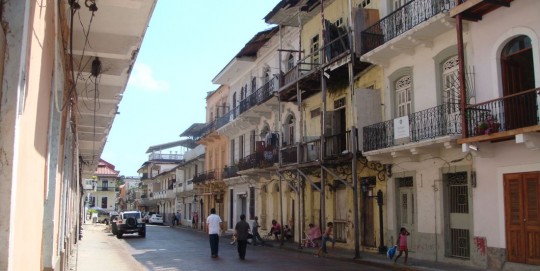
Very interesting, but it is important to note that the exhibits are mostly made of long texts in Spanish, with no English translation available.
The first tentative to build the canal was made by France who failed and lost 22,000 men, mostly due to diseases carried by mosquitoes. After a Cuban doctor found how to eradicate them (the mosquitoes, not the French), an American attempt to build the Canal succeeded, and the first boat went through in 1914. Nowadays, there are 15,000 vessels going through every year, and it takes them 10-hours to go all the way.

Casco Viejo is also the part of town where you find the cheapest hotels, and we will probably sleep there for a night after the car is in a container sailing to Colombia. After lunch, we go to the fruit market to buy food we will cook later. Then, we go back to our camp site.
